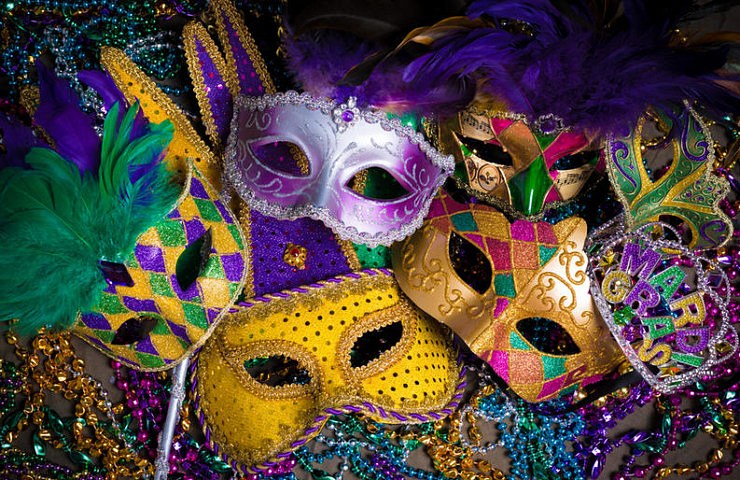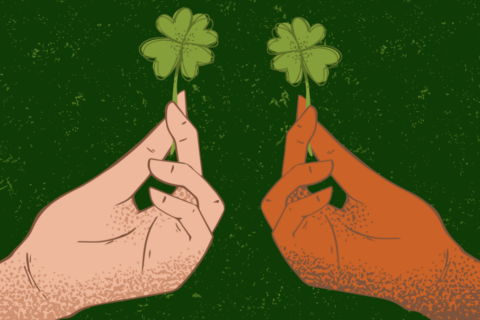Intro: Yellow, green and purple beads, masks, costumes, king cake and lots and lots of alcohol. Mardi Gras can seem overwhelming to those who didn’t grow up immersed in the culture. From how it started, what it is and how its celebrated we’re going to break everything down for you.
Mardi Gras is French for “fat Tuesday” and begins around the end of February to the beginning of March every year. The event coincides with Carnival and ends on “Shrove Tuesday,” the day before Ash Wednesday. The TLDR of Mardi Gras is eating, drinking and partying as much as you can before you give something up for Lent.
The history of Mardi Gras is complicated. The origins can be traced back to medieval Europe from Italy to France and then to France’s colonies.
“On March 2, 1699, French-Canadian explorer Jean Baptiste Le Moyne Sieur de Bienville arrived at a plot of ground 60 miles directly south of New Orleans, and named it “Pointe du Mardi Gras” when his men realized it was the eve of the festive holiday,” according to Mardi Gras New Orleans. “Bienville also established “Fort Louis de la Louisiane” (which is now Mobile) in 1702. In 1703, the tiny settlement of Fort Louis de la Mobile celebrated America’s very first Mardi Gras.”
When New Orleans was established in 1718 it only took a few years for the city to celebrate Mardi Gras openly, but not in the way it is done today. Instead, it was celebrated with “elegant society balls.”
“By the late 1830s, New Orleans held street processions of maskers with carriages and horseback riders to celebrate Mardi Gras,” according to Mardi Gras New Orleans. “Dazzling gaslight torches, or “flambeaux,” lit the way for the krewe’s members and lent each event an exciting air of romance and festivity. In 1856, six young Mobile natives formed the Mistick Krewe of Comus, invoking John Milton’s hero Comus to represent their organization. Comus brought magic and mystery to New Orleans with dazzling floats (known as tableaux cars) and masked balls. Krewe members remained anonymous.”
It wasn’t until 1870 that revelers began the tradition of “throws” where those on parade floats throw beads at the crowd. Two years after that the position of “King of Carnival, Rex” was instituted for the celebration by businessmen.
“To honor the visiting Russian Grand Duke Alexis Romanoff, the businessmen introduced Romanoff’s family colors of purple, green and gold as Carnival’s official colors,” according to Mardi Gras New Orleans. “Purple stands for justice; gold for power; and green for faith. This was also the Mardi Gras season that Carnival’s improbable anthem, “If Ever I Cease to Love,” was cemented, due in part to the Duke’s fondness for the tune.”
In 1875 Fat Tuesday was made a legal holiday in New Orleans, which it remains to this day.
Houston is only five hours away from the biggest Mardi Gras celebration in America: New Orleans. Mardi Gras is what New Orleans is known for and it can get absolutely crazy. If you need to practice before you go all out, the Houston area has some beginner Mardi Gras celebrations this weekend, most notably the Galveston festival.
Every year Galveston hosts a parade and concert on the Strand. Tickets are $20 and be prepared for drunk crowds.
Also, traditionally, the way you receive those popular Mardi Gras beads is by flashing people (yes, full on with your chest) — so be prepared for that when you’re celebrating!





Recent Comments